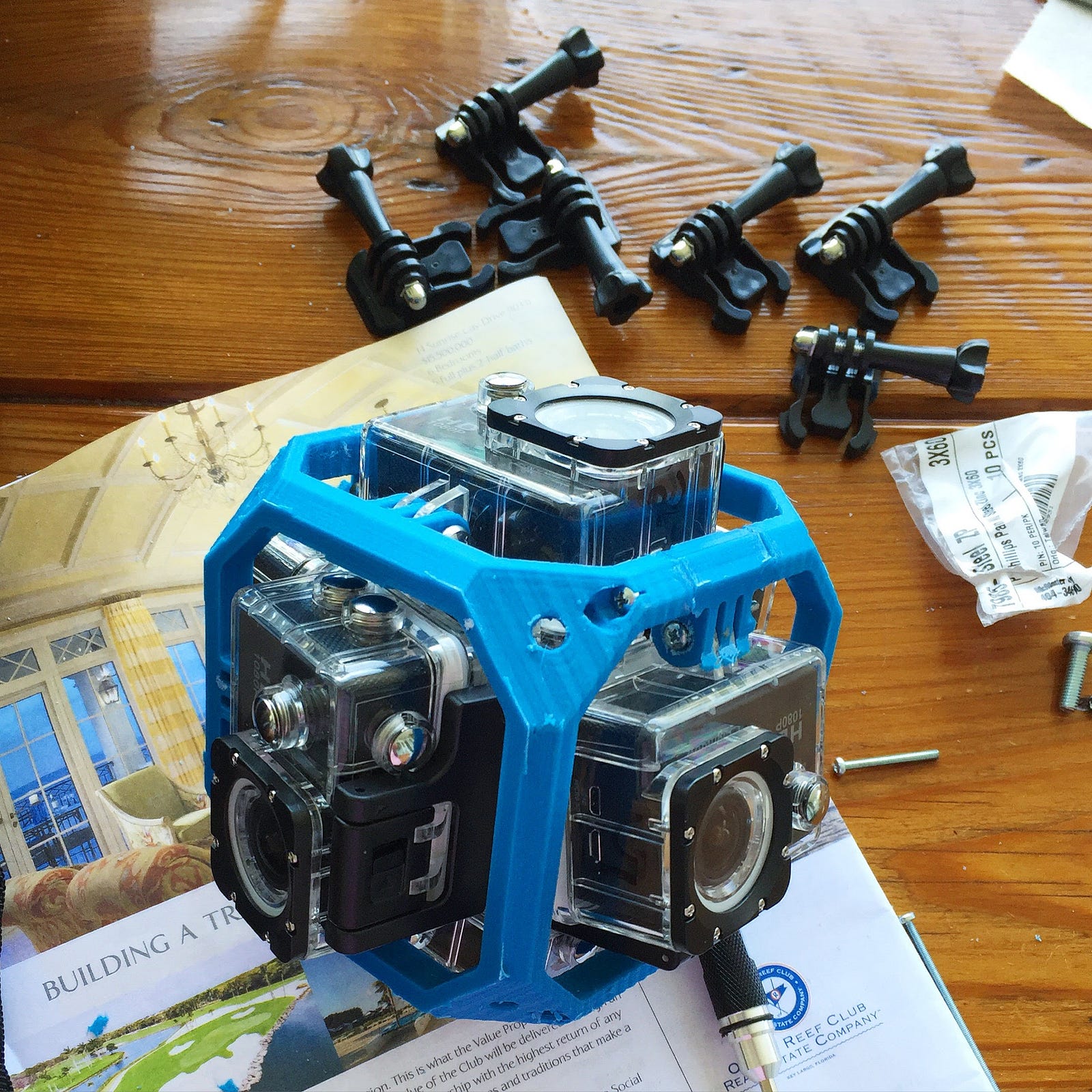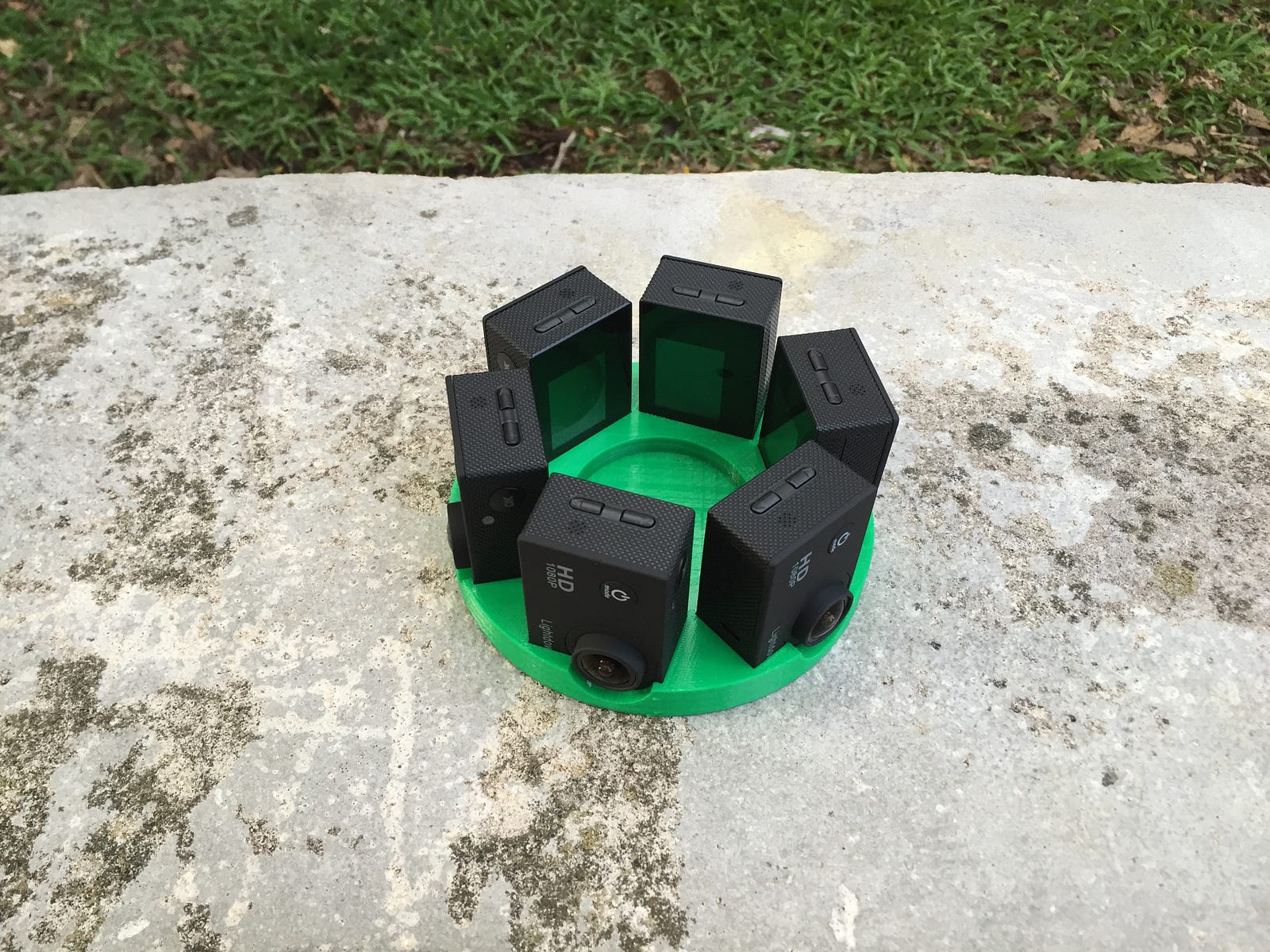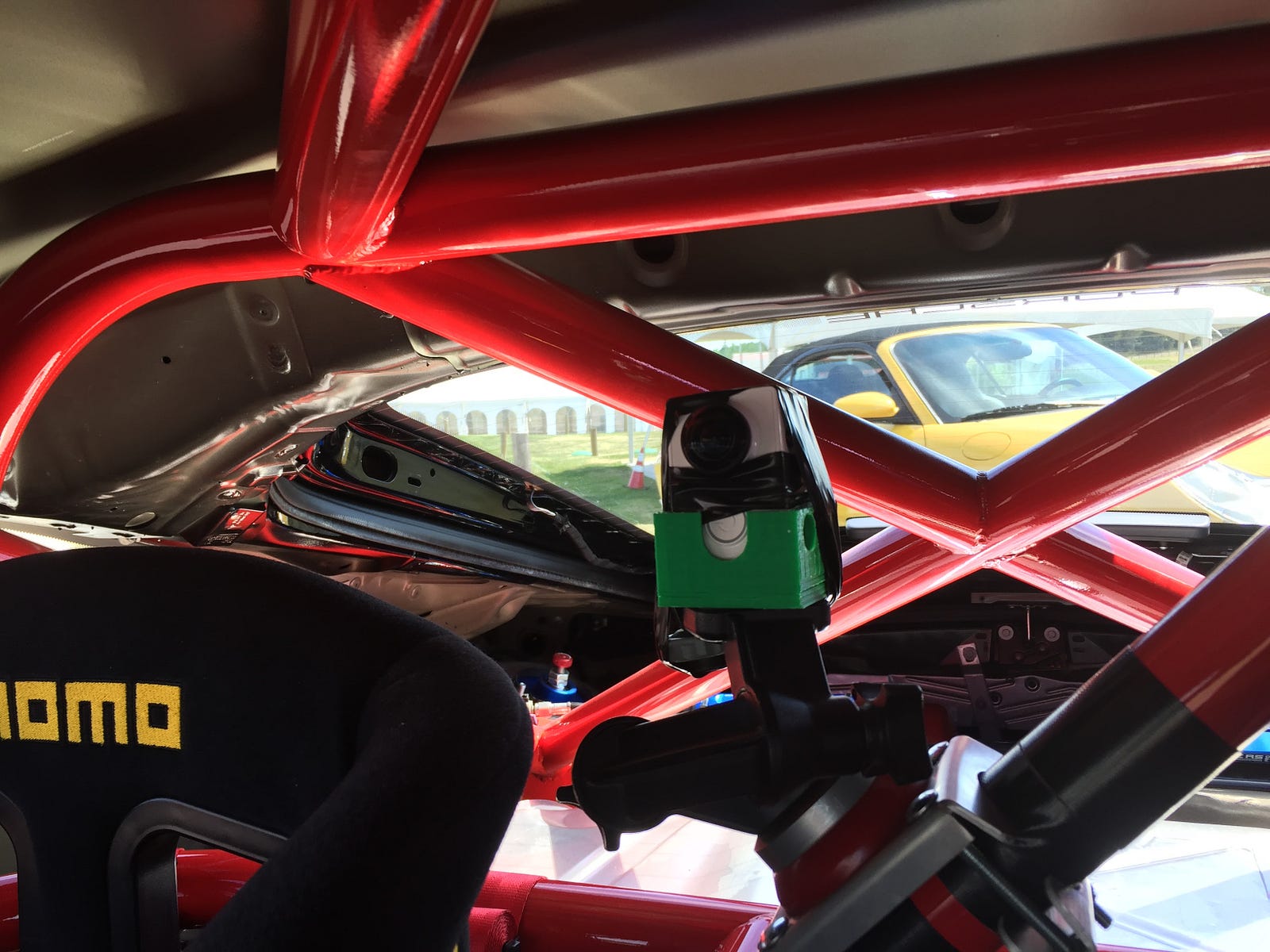What Building a 360 Camera Taught me that College Couldn't.
Hands-on experience teaches something that colleges could never.

Degrees are great. Despite recent conjecture about if a degree is still necessary, I remain a solid fan of them.
But theres a certain danger that degrees carry. See, when you enter University, the President sits the incoming class down and gives them the pep talk. “You can do anything! Believe in yourself and work hard, and nothing will be of impasse.”
Four grueling years later, after too many late nights turned into early mornings, you emerge from your cave. A blinding light shines down on you and a degree is thrust into your hand. The same leader you saw 4 years ago comes back and says “Congratulations! Now go change the world.”
Even though the feelings to follow this event are euphoric, its important to remember that some things really cannot be taught in a classroom. Mastering the design process requires doing.
Lesson One: There’s No Solution Manual.
I know this sounds so cliché but hear me out…theres a good lesson here!
It was 2016, and every tech editor was speculating that 360 video was about to take off. Wanting to be ahead of the curve, I decided to find an affordable solution to filming 360 video.
The unfortunate truth was that no consumer-level 360 degree video solution existed yet. I could buy 16 GoPros and mortgage my house, or buy a professional unit using my firstborn. After a few hours of research, a question popped into my head:
I was an engineer, why not build one?
School conditions you to find the solution to problems. At times, this could be an actual solution manual. It may, however, just be a generally accepted principle. Classes teach us theres always a ‘right’ way to do things and a ‘wrong’ way. And there are never questions that we can’t answer.
I fell back on this principle and started Googling for home built, pre existing solutions. I stumbled upon a few options of 3D printed rigs. I found some templates, downloaded them, and started printing. (Did I mention I had a 3D printer? I was such a nerd.)
Eventually, USPS delivered the Chinese ‘action’ cameras and I assembled everything. I was ecstatic and excited to try out my new creation!

The two main problems with this rig were:
- There was no way to remotely control the cameras. This meant individually powering each camera on, and ‘clapping’ to sync 6 clips in premiere. It was a NIGHTMARE. My mac almost caught fire.
- Like an idiot, I hadn’t done my due diligence with the cameras. , There was no way to change the aspect ratio. I was filming in 16:9, not 4:3. The frames were too narrow in places and it wasn’t overlapping enough to make seamless 360 video.
I had failed.
Feeling defeated, I headed back to do the only thing I knew how to do, GOOGLE AGAIN.
A second attempt landed me right back where I started. Different mount, similar issues. This trial was much better. The hexagonal shape gave enough overlap for some decent stitching. But, I wasn’t satisfied with this form of ‘360 degree video’.

Lesson Two: Theres a beautiful art to Bodging, and sometimes Poetic License is ok.
Tom Scott gives the best description of “bodging” that one ever could. Its the mashing of two separate ideas or entities to make them work together, usually in a clumsy way. Round peg, square hole.
After some more googling, I decided that the problem was not with my original rig, but the cameras! I upgraded to some pricier Chinese cameras. These ones had the 4:3 aspect ratio, as well as wifi! I set to work at slotting them into my original design. Thanks to some nifty open source firmware by Stephen Jones, I was able to reverse the camera’s wifi. By default, modern-day cameras act as a hotspot that your phone connects to. This mod let me convert these hotspots into listeners. I could then create a hotspot from my phone, and connect all 6 cameras at once. Then, with the click of one button, I could start and stop recording with ease.
I used a 3D printed rig from one site, and some open-sourced software from somewhere else. Bodging these two together caused something that was somewhat stable-looking. My lollipop monstrosity worked. But was I satisfied? Hardly! My bodged together pseudo masterpiece didn’t feel like it was the best thing I could make.
Now, don’t get me wrong. I’m not advocating for cheating, plagiarism, or copycat of any sort. But sometimes, bodging smaller solutions creates your big solution. It’s okay to admit that someone else has done it well, and there might not be a way to do it better.
School, unfortunately, teaches us this is wrong. Shortcuts, quick memory tricks, or alternate methods are often frowned upon. This is most likely done so engineers can grasp core concepts. After-all, who is going to solve a 3rd order differential equation without Matlab in the real world? Regardless, its important to not let this sort of thinking indoctrinate our problem solving strategies.
Lesson Three: Think small.
No, Smaller. Keep going. Okay, there you go.
Discouraged, I arrived back at my drawing board. I had accomplished my goal. My camera was working, waterproof, and the footage was stitchable. But it didn’t feel like victory to me.
I kept investigating the concept cameras that were soon to come to market. The majority of action-cameras were two fisheye lenses back to back. Could I make something like that?
Turns out, these Chinese cameras have a pretty standard lens mount. You can actually buy a few different lenses and swap out the ones on your unit. What if I fired up OnShape, and threw together a back-to-back idea?
A few days later, more Chinese product showed up on my doorstep. I finished the CAD and my printer set to work. The result was incredible. I had made seamless video that only required some simple back-to-back stitching of 2 clips!
This might not be school’s fault, but we often think “that can’t be the solution, its too easy.” This kind of thinking tends to get in the way to seeing the ultimate solution. If the problem seems too easy to solve, it is.


Lesson Four: Sometimes the long road is necessary.
Its natural to feel like shit when you see the shortcut you should have taken, so don’t feel bad about it.
I know this seems to contradict the last point. Sometimes we end up taking the long way because there is no other way to get there. We’re taught to master subjects in one go. This is reinforced with tests, quizzes, and grades. If we don’t execute 100% every time, our academic standing suffers. The reality of the real-world is that most of the time, we need to try and fail…a lot. In this failure we learn things about the process that we never could have learned another way. Stop thinking of failure as the by-product of success. Start thinking of it as a necessity for success.
“Failure is an option here. If things are failing, you’re not innovating enough” -Elon Musk
Keep building, keep dreaming, and keep failing.
-Baron
P.S. My 360 camera works great and its super portable. If you have any questions about the project or want to get your hands on any of the files I used, contact me!